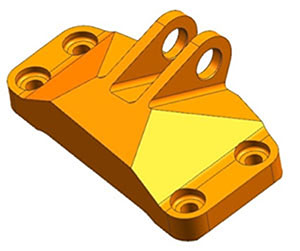3D printing wouldn’t have reached its current status without the aid of CAD software, but, more than the ability to design parts for 3D printing, GrabCAD has given designers and engineers a place to share their files to pursue collaborative design. To understand the open hardware/software revolution galvanized by the file sharing site, who better to turn to than the CEO and founder of GrabCAD, Hardi Meybaum? In a new book, titled The Art of Product Design, Meybaum discusses the role of 3D printing and the internet in the ongoing open engineering revolution.
The author sets about describing the lowering of barriers made possible by the internet and 3D printing in his new book, arguing that “web-based communities, knowledge, and tools” are driving the rise of open engineering. Despite the economic crisis or the remoteness of various engineers from one another, tools like GrabCAD have allowed individuals from different backgrounds in different parts of the world to collaborate on innovative projects. In turn, large companies are latching onto such cooperative communities in their own way.

To demonstrate these ideas, Meybaum’s book relays the stories of individuals, small firms and large companies as they embrace the new e-communities of engineering. Included in the book is GrabCAD’s own involvement with GE, as the multinational set about launching its crowd campaign to design a new, 3D-printable jet engine bracket. Also covered is the story of Rest Devices, a small company that uses 3D printing to develop products that promote peace of mind, such as the Mimo smart baby monitor. Here’s a full list of the book’s chapters:
Introduction: The Digital Revolution Gets Physical
Chapter 1: Gearheads Get No Respect
Chapter 2: Since the Potter’s Wheel, the Most Important Tool in History
Chapter 3: A Million Engineers on the March
Chapter 4: New Culture, New Tools Converge in the Cloud
Chapter 5: Design Challenge: Break Down the Monastery Doors
Chapter 6: Here’s My Prototype; Please Kick the Crap out of It
Chapter 7: Manufacturing: Here You Go; Make This
I am reporting here on the release of the book, which took place a couple of days ago on April 28, and am yet to read it cover to cover, so personally I can’t say whether you should buy it or not. However, to save you some time reading Amazon reviews, here are two separate opinions about the book from different buyers. First a five star review from Justin Cook:
This book presents an interesting take on what the author claims is a second digital revolution, which oddly enough turns out to be a transformation of the physical. When anything we can imagine can be virtually engineered and tested as a collective, cloud based endeavour and then translated directly and almost instantly into the physical world through 3D printers and robot facilitated manufacturing – well then, imagination is the only limit. I never would have thought something as potentially mundane as CAD software could play such a central role in the reorganization and remaking of how a massive part of the global economy functions. It’s going to be interesting.
And, now, a three star review from Paul Arcoleo:
As a mechanical engineer, and a 2-year user of GrabCAD when I saw a book titled “The Art of Product Design” by the GrabCAD CEO I was excited. I expected that through his experience he could give some precise and useful insight in the actual y’know, art of designing a product.
The majority of the book reads like a lengthy GrabCAD advertisement (which he does briefly apologize for in the final chapter). Though Meybaum’s wit does liven it up a bit, it is mostly lacking in tangible product design advice. What it is instead is a global landscape of product development is changing, which while insightful in it’s own right, isn’t what the book is titled.
In this way it felt like the book’s title was a misnomer, and turned me off to a lot of the book. Though some of the company features are nice anecdotes, the number of times they say “3D CAD is pivotal in our ability to design products quickly” makes me want to smack them over the head with a giant inflatable bat that says “NO S***”. By the end of the book I was so sick of hearing about “cloud-computing platforms such as GrabCAD’s WorkBench” that I nearly walked away from the book several times, despite being a loving user of the site.
There were other minor quibbles I had with the book, like his seemingly random criticism of video games, made worse by the aforementioned issues I had with its content, but those are on a more subjective level.
Here, Amazon’s reviews demonstrate a necessary part of the open engineering movement: crowd-sourced criticism (positive or negative) of literature meant to inform our product design. Thank god we have the crowd to tell us what books to buy!
Source: GrabCAD


